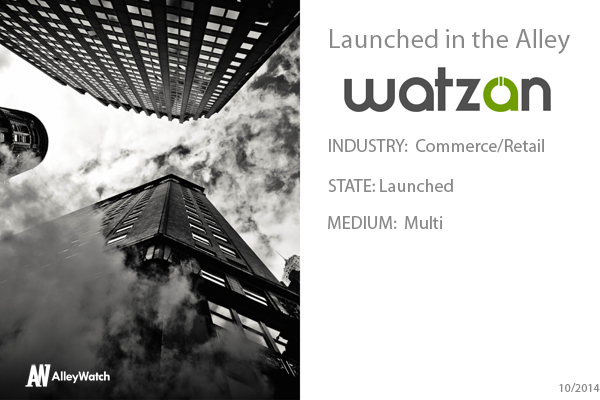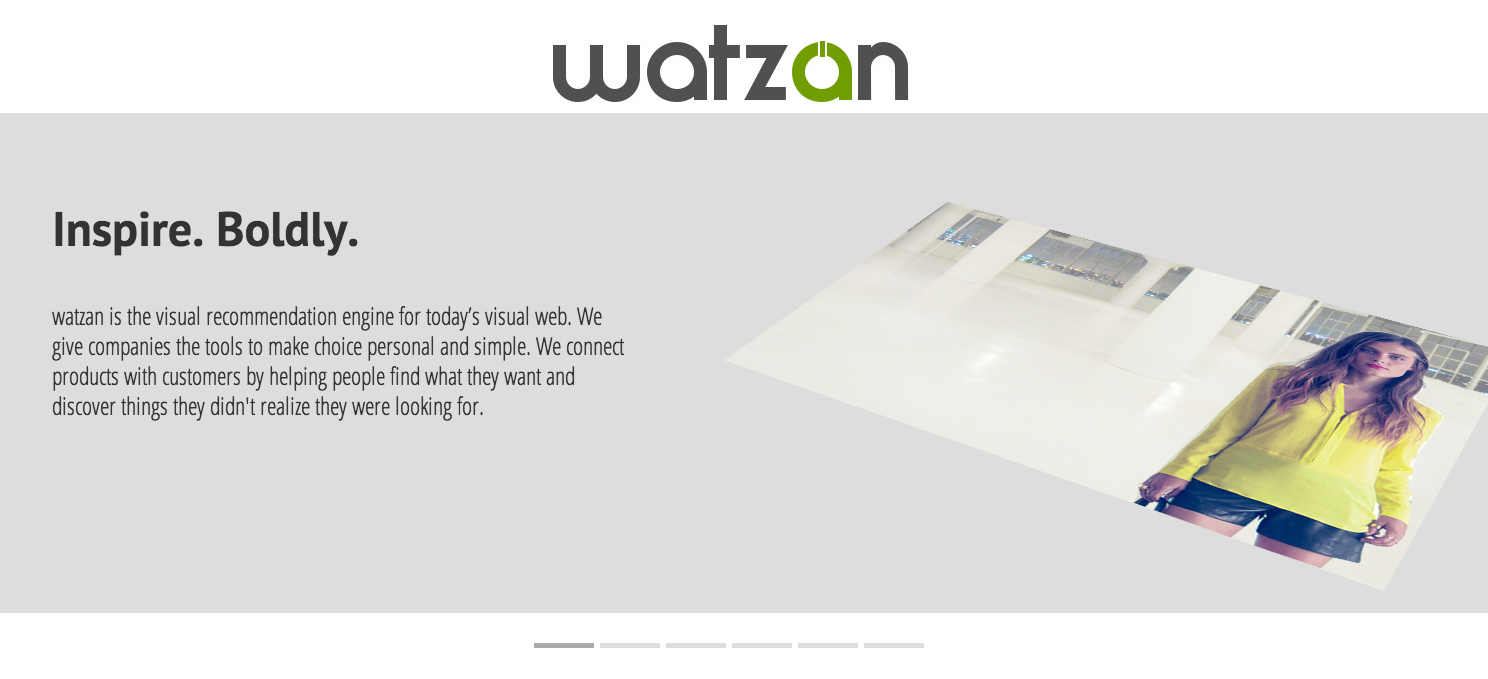You walk into a brick-and-mortar and what do you see? Merchandise displayed. And why not? It does help to increase sales, after all.
So why doesn’t the Internet, the biggest visual display platform going, have a digital merchandise display platform. Elementary, no, watzan?
This watzan is a Personal Digital Merchandising Platform that founder Charles Benaiah says is the first visual recommendation of it’s kind, developed to increase conversion online, just as merch displays offline.
More from him on the problems the platform solves – and the solutions it offers. And not just for retailers…
Tell us about the product.
watzan merchandises the digital world. The web is visual; recommendations should be, too. Our personal digital merchandising (PDM) platform is the first visual recommendation engine. And just as merchandising boosts sales offline, PDM can increase conversion online.
Retailers can use watzan to create an even more personal, social, easy and inspirational shopping experience for their customers.
Lookbooks are merchandised, but not shoppable. Commerce grids are shoppable, but commoditized. We create a merchandised, shoppable experience for each customer.
Our patent-pending PDM platform leverages what a retailer knows, what their customers want and what that customer’s friends like, and it uses that information to emphasize certain products.
Inspired by stock-market heat maps (green = up; red = down), watzan organizes a collection visually. We make products appear bigger, depending on how much the customer likes it. We make products appear brighter, based on how much his or her friends like it.
Like social media, our personal shopping heat map is proactive, relevant and curated for the user based on his or her community.
How is it different?
Many companies personalize retail promotions and recommendations. watzan is the first company to socialize online retail. Personalizing still puts the brand first. Socializing lets the customer decide how they want to experience the brand.
That matters. Social sells. Twitter is adding a buy button. In late August, Target and Nordstrom teamed up to let customers buy products directly from Instagram. That social experience ends, though, when you get to the retail site.
Social media platforms put the person at the center of their own digital world. Users curate their environment, and the platform delivers it. Online, retailers still react to customer actions and searches.
Personal retail still means poking around, looking for what you want. With watzan, what you want comes to you. watzan’s discovery process is not based on simple criteria, like price, but rather, on what matters to the people who matter to you.
What market are you attacking and how big is it?
Our primary market is online retail consumer intelligence. According to Gartner, marketers now spend $14.4 billion on business intelligence (BI), which gleans insights from big data to help brands tailor how they speak to their audience or audience segments.
We provide consumer intelligence (CI), enabling brands to drive sales by relating to each of their customers, not just to market segments.
While watzan was conceived with online retail in mind, it can help other verticals as well. It makes in-store associates more effective, makes media come to life, makes live events like big conferences manageable. We’re already finding clients in a variety of markets.
What is the business model?
We license watzan’s PDM platform to any company that seeks to create a more social experience for their customers.
Online, companies sell shoes like they sell movies or mutual funds. Every company that sells a product, service, media or idea needs watzan, because we merchandise the digital world.
Please give us some holiday trends that New Yorkers may like based on your data.
watzan will power a brand trend merchandising app called Shopitude. It a fun system that lets people visually follow what their friends like. Users can rank five things they like in order. Then, they can see what’s trending in their world or share their trends. It will go live in for the holidays. We think it will be a great way for New Yorkers readers and visitors to see what’s hot – not just in general, but for them.
What are the milestones that you plan to achieve within six months?
We already have our first clients in the live event and experience improvement sectors. In the next six months, we expect to go live with a number of retailers across a spectrum of products and services that appeal to a wide demographic.
If you could be put in touch with one investor in the New York community who would it be and why?
We’re finding that companies get our personal merchandising story more quickly than investors. We’d love to be venture-backed. Right now, we’re client-backed. And we’re more than ok with that. It just means we’re too nerdy to sit with the cool kids at lunch.
Everyone who takes the time to listen to our story sees something that changes his or her world. VCs are busy. I know, I was one. They don’t have time to listen and our story isn’t “we’re applying [insert name of current big, hot company] to this different market.” So our 2-second sound bite is about two years away.
If we could meet one VC, I’d like to meet someone who says, “What’s your story?” instead of looking for a pitch deck in a certain format.
Why did you launch in New York?
I love this question. It reminds me of my professor from Econ 101. We explained our university was where it was, not for any good business reason but because that’s where the founder lived.
watzan is in NYC because the folks who brought the idea to life are in NYC.
What’s more interesting is that all of us came here from elsewhere. I’m from Toronto. Michael is from New Orleans. Bryan is from Southern California. We’re here because this is where everything happens.
What’s your favorite fall destination in NYC?
Anywhere with pumpkin beer.





